Chronological order of conflicts America has participated in
Curtousy of: A.H., L.N., ...
A Brief History of the Pequot War

Publication: 1736
In order to bring to an end both the Pequots' continual harassment of the new settlers and their plans for a great Indian confederation which might include the large Narragansett tribe, the Connecticut authorities in May of 1637 took the offensive against the Pequots.
A History of the Pequot War (Relation of the Pequot Warres)

Publication: 1660
In 1809, William Trumbull Williams found among the papers of his grandfather, the former Connecticut governor Jonathan Trumbull, a manuscript endorsed in the “bold handwriting” of Trumbull’s seventeenth-century predecessor John Winthrop Jr.: “Lieft Lion Gardiner his relation of the Pequot Warres”
Indian Wars of New England Volumes 1-3
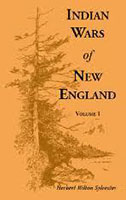
Publication: 1910
Vol. 1: Topography of Indian tribes. The early settler and the Indian. The Pequot war. Wars of the Mohegans.
Vol. 2: The land of the Abenake. The French occupation. King Philip's war. St. Castin's war.
Vol. 3: Queen Anne's war. Lovewell's war. Governor Shirley's war. French and Indian war.
Mystic Fiasco: How the Indians Won the Pequot War

Publication: 2010
American histories have long held that in May 1637, "Connecticut's Birthday", a small force of English colonists guided by Mohegan Native allies set out to break the back of Pequot dominion in New England.
History of the Pequot War
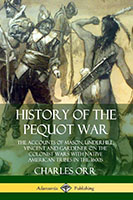
Publication: 1897
Counting as the first large-scale conflict fought between the incipient colonial settlers and Native American peoples, the series of skirmishes that constitute the Pequot War are an important episode in North American history. The Pequot tribe were dominant in Connecticut, their leadership being markedly hostile in contrast to the friendliness and cooperation of other tribes.
History of King Philip's War

Publication: 1862
Reproduced: 2018
King Philip's War—also known as the First Indian War, the Great Narragansett War or Metacom's Rebellion—took place in southern New England from 1675 to 1676. It was the Native Americans' last-ditch effort to avoid recognizing English authority and stop English settlement on their native lands.
Flintlock and Tomahawk

Publication: 1958
This classic account of King Philip’s War, first published in 1958, offers a bird’s-eye view of the conflict, from the Wampanoag sachem’s rise to his ultimate defeat. The battles, massacres, stratagems, and logistics of this war are all detailed, with the leaders of both sides figuring prominently in this tale of bloodshed, privation, and woe. The author weighs all the factors contributing to the Native Americans’ defeat and surveys the effects of the war on the lives of both Indians and colonists in the years to come. With insight, balance, and compassion, Leach portrays the tragedy of the war and points toward the future of the nascent American republic.
King Philip's War: Civil War in New England, 1675-1676
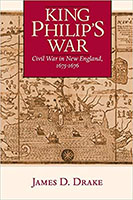
Publication: 1999
Although traditionally understood as an inevitable clash of cultures or as a classic example of conflict on the frontier between Indians and whites, in the view of James D. Drake it was neither. Instead, he argues, King Philip's War was a civil war, whose divisions cut across ethnic lines and tore apart a society composed of English colonizers and Native Americans alike. According to Drake, the interdependence that developed between English and Indian in the years leading up to the war helps explain its notorious brutality.
The Name of War
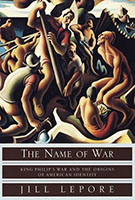
Publication: 1998
Telling the story of what may have been the bitterest of American conflicts, and its reverberations over the centuries, Lepore has enabled us to see how the ways in which we remember past events are as important in their effect on our history as were the events themselves.
King Philip's War
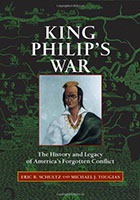
Publication: 2000
Through a careful reconstruction of events, first-person accounts, period illustrations, and maps, and by providing information on the exact locations of more than fifty battles, King Philip's War is useful as well as informative. Students of history, colonial war buffs, those interested in Native American history, and anyone who is curious about how this war affected a particular New England town, will find important insights into one of the most seminal events to shape the American mind and continent.
Igniting King Philip's War: The John Sassamon Murder Trial
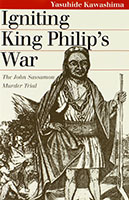
Publication: 2001
Although it is usually considered from a political or cultural standpoint, Kawashima retells the story of the murder and trial from the perspective of legal history and overlapping jurisdictions. He shows that Plymouth's aggressive extension of its legal authority marked the end of four decades of legal coexistence between Indians and colonists, ushering in a new era of cultural and legal imperialism.
Black Goose: The History of Seekonk Vol 1
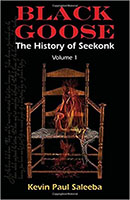
Publication: 2017
This compelling literary narrative explains how the Seekonk Plain became the first frontier settlement of the Plymouth and Massachusetts Bay Colonies starting in the early colonial year of 1643.
Memory Lands

Publication: 2018
This book moves back and forth across time and place in order to weave together a dense and wide-ranging reconstruction of King Philip's War and its many continuing consequences.
Our Beloved Kin
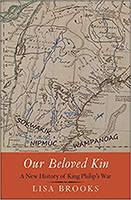
Publication: 2018
With rigorous original scholarship and creative narration, Lisa Brooks recovers a complex picture of war, captivity, and Native resistance during the “First Indian War” (later named King Philip’s War) by relaying the stories of Weetamoo, a female Wampanoag leader, and James Printer, a Nipmuc scholar, whose stories converge in the captivity of Mary Rowlandson.
The Memoirs of Capt. Peter Drake
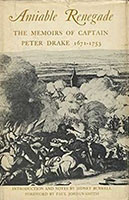
Publication: 1755
Containing, an Account of Many Strange and Surprising Events, Which Happened to Him Through a Series of Sixty Years, and Upwards.
The Border Wars of New England
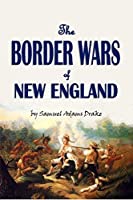
Publication: 1897
Originally published over 75 years ago, The Border Wars of New England is Samuel Adams Drake's enlightening compact historical description of what has been commonly referred to as King William's and Queen Anne's Wars.
The Colonial Wars 1689 - 1762

Publication: 1964
Although the colonial wars consisted of almost continuous raids and skirmishes between the English and French colonists and their Indian allies and enemies, they can be separated into four major conflicts, corresponding to four European wars of which they were, in varying degrees, a part: King William's War (1689-97) (War of the League of Augsburg); Queen Anne's War (1702-13) (War of the Spanish Succession); King George's War (1744-48) (War of the Austrian Succession); and The French and Indian War (1755-62) (Seven Years' War).
American Colonies: The Settling of North America
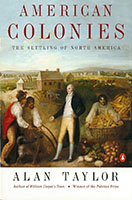
Publication: 2002
A multicultural, multinational history of colonial America.
The First Frontier
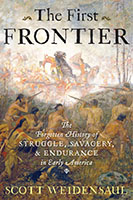
Publication: 2012
Frontier: the word carries the inevitable scent of the West. But before Custer or Lewis and Clark, before the first Conestoga wagons rumbled across the Plains, it was the East that marked the frontier.
King William's War

Publication: 2021
While much has been written on the French and Indian War of 1754–1763, the colonial conflicts that preceded it have received comparatively little attention. Yet in King William’s War, the first clash between England and France for control of North America, the patterns of conflict for the next seventy years were laid, as were the goals and objectives of both sides, as well as the realization that the colonies of the two nations could not coexist.
The Memoirs of Capt. Peter Drake

Publication: 1755
Containing, an Account of Many Strange and Surprising Events, Which Happened to Him Through a Series of Sixty Years, and Upwards.
The Border Wars of New England

Publication: 1897
Originally published over 75 years ago, The Border Wars of New England is Samuel Adams Drake's enlightening compact historical description of what has been commonly referred to as King William's and Queen Anne's Wars.
Indian Wars of New England Volumes 1-3

Publication: 1910
Vol. 1: Topography of Indian tribes. The early settler and the Indian. The Pequot war. Wars of the Mohegans.
Vol. 2: The land of the Abenake. The French occupation. King Philip's war. St. Castin's war.
Vol. 3: Queen Anne's war. Lovewell's war. Governor Shirley's war. French and Indian war.
The Colonial Wars 1689 - 1762

Publication: 1964
Although the colonial wars consisted of almost continuous raids and skirmishes between the English and French colonists and their Indian allies and enemies, they can be separated into four major conflicts, corresponding to four European wars of which they were, in varying degrees, a part: King William's War (1689-97) (War of the League of Augsburg); Queen Anne's War (1702-13) (War of the Spanish Succession); King George's War (1744-48) (War of the Austrian Succession); and The French and Indian War (1755-62) (Seven Years' War).
Queen Anne's War: The Second Contest for North America 1702-1713

Publication: 2017
Although King William's War (1689-1697) had established the basic disputes between New France and the English colonies, the conflict had resolved little beyond making it clear that the smaller French colony was more than capable of defending itself. When news of the War of Spanish Succession (1701-1714), or Queen Anne's War as it would become known in North America, arrived in 1702, few envisioned that the resumption of the previous conflict would grow to engulf eastern North America from Newfoundland to Florida, pitting the Spanish, English, and French colonies along with their respective native allies into a concerted contest for control of the continent.
The Colonial Wars 1689 - 1762

Publication: 1964
Although the colonial wars consisted of almost continuous raids and skirmishes between the English and French colonists and their Indian allies and enemies, they can be separated into four major conflicts, corresponding to four European wars of which they were, in varying degrees, a part: King William's War (1689-97) (War of the League of Augsburg); Queen Anne's War (1702-13) (War of the Spanish Succession); King George's War (1744-48) (War of the Austrian Succession); and The French and Indian War (1755-62) (Seven Years' War).
Fantastic Breed: Americans in King George's War

Publication: 1968
Examines the leadership and battle achievements of colonial Americans such as William Pepperrell, Samuel Waldo, William Vaughan, and Roger Warren in King George's War, that part of the Seven Years' War fought on the North American continent.
Montcalm and Wolfe
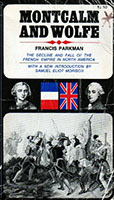
Publication: 1884
Montcalm and Wolfe is the sixth volume in Francis Parkman's seven-volume history, France and England in North America, originally published in 1884. It tells the story of the French and Indian War.
French and Indian Wars
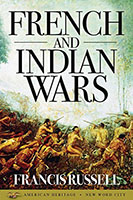
Publication: 2015
In the colonization of North America, Great Britain, France, Spain, the Netherlands, and Sweden each sought a share. By the eighteenth century, only Great Britain and France remained as rivals for the heart of the continent.
The War that Made America

Publication: 2005
Fred Anderson takes readers on a remarkable journey through the vast conflict that, between 1755 and 1763, destroyed the French Empire in North America, overturned the balance of power on two continents, undermined the ability of Indian nations to determine their destinies, and lit the "long fuse" of the American Revolution.
Empires at War
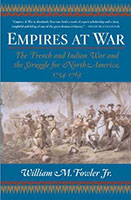
Publication: 2005
Empires at War captures the sweeping panorama of this first world war, especially in its descriptions of the strategy and intensity of the engagements in North America, many of them epic struggles between armies in the wilderness.
White Devil
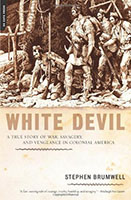
Publication: 2004
On the morning of October 4, 1759, Rogers and his men surprised the Abenaki Indian village of St. Francis, slaughtering its sleeping inhabitants without mercy. A nightmarish retreat followed. When, after terrible hardships, the raiders finally returned to safety, they were hailed as heroes by the colonists, and their leader was immortalized as "the brave Major Rogers." But the Abenakis remembered Rogers differently: To them he was Wobomagonda--"White Devil."
Crucible of War
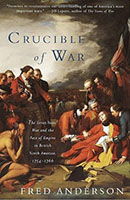
Publication: 2000
In this vivid and compelling narrative, the Seven Years' War–long seen as a mere backdrop to the American Revolution–takes on a whole new significance. Relating the history of the war as it developed, Anderson shows how the complex array of forces brought into conflict helped both to create Britain’s empire and to sow the seeds of its eventual dissolution.
The French and Indian War
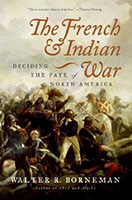
Publication: 2006
The French and Indian War: Deciding the Fate of North America presents the triumphs and tragedies of this epic struggle for a continent, placing them in the larger context of France and Great Britain's global conflict—what Samuel Eliot Morison called truly the first world war—and emphasizes that the seeds of discord sown in its aftermath would give root to the American Revolution.
The Cherokee Trail of Tears
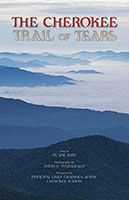
Publication: 1978
This is a historically accurate and well researched history of the Cherokee Forced Removal. In 1838, Federal troops imprisoned 13,000 Cherokees in preparation for their removal from their native lands in the southeastern United States to the Indian Territory (present-day Oklahoma).
Understanding the Cherokee War
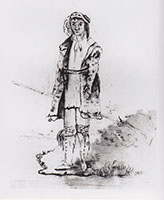
Publication: 2016
The Cherokee Nation launched a war against its former English allies in the fall of 1759, which lasted until the fall of 1761. The complex diplomatic relationship between the English and the Cherokees led to this relatively brief period of conflict. Against the backdrop of the North American Seven Years' War between France and England, Britain's continued exploitation and condescension toward the Cherokees, and its insatiable hunger for Cherokee land led to a great bloodshed of colonists and Cherokees.
John Forbes: Scotland, Flanders and the Seven Years' War

Publication: 2015
In November 1758 Brigadier General John Forbes’s army expelled the French army from Fort Duquesne at the forks of the Ohio River. Over seven months Forbes had co-ordinated three obstructive and competitive colonies, managed Indian diplomacy, and cut a road through over a hundred miles of mountain and forest.
Encyclopedia of American Indian Wars, 1492-1890
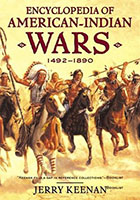
Publication: 1997
While people automatically think of the Revolutionary War or the Civil War as defining moments in American history, the wars with the Indians were strikingly important in shaping the destiny and mythology of the nation. Encyclopedia of American Indian Wars notes the inevitability of conflict between western and native cultures given the great disparity in values and customs, especially with regard to land ownership.
1776

Publication: 2005
In this masterful book, David McCullough tells the intensely human story of those who marched with General George Washington in the year of the Declaration of Independence - when the whole American cause was riding on their success, without which all hope for independence would have been dashed and the noble ideals of the Declaration would have amounted to little more than words on paper.
The Stamp Act Crisis

Publication: 1953
The Stamp Act, the first direct tax on the American colonies, provoked an immediate and violent response. The Stamp Act Crisis, originally published by UNC Press in 1953, identifies the issues that caused the confrontation and explores the ways in which the conflict was a prelude to the American Revolution.
The Barbarous Years

Publication: 2012
From an acclaimed historian of early America, a compelling account of the first great transit of people from Britain, Europe, and Africa to the British colonies of North America and their involvements with each other and the indigenous peoples of the eastern seaboard.
The American Revolutionary War

Publication: 2015
The American Revolutionary War was an event that changed the path of nations. The birth of the United States of America signaled a deadly struggle that cost the lives of thousands of American and British soldiers. The conflict between the mother country, Britain, and the colonist was series of events over a decade that finally led to the first shots being fired at the battle of Lexington and Concord.
The Glorious Cause
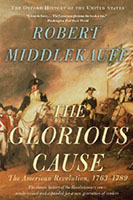
Publication: 1982
The first book to appear in the illustrious Oxford History of the United States, this critically acclaimed volume--a finalist for the Pulitzer Prize--offers an unsurpassed history of the Revolutionary War and the birth of the American republic.
Almost a Miracle

Publication: 2007
In this gripping chronicle of America's struggle for independence, award-winning historian John Ferling transports readers to the grim realities of that war, capturing an eight-year conflict filled with heroism, suffering, cowardice, betrayal, and fierce dedication. As Ferling demonstrates, it was a war that America came much closer to losing than is now usually remembered.
The Strategy of Victory

Publication: 2017
Led by the Continental Congress, the Americans almost lost their war for independence because their military thinking was badly muddled. The embryo nation narrowly escaped from the disastrous results of these misconceptions thanks to the levelheaded intelligence of one man: General George Washington.
A History of the American Revolution

Publication: 1969
The history of the American rebellion against England, written by one of America's preeminent eighteenth-century historians, differs from many views of the Revolution.
The Cause
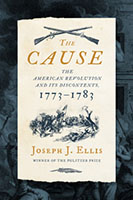
Publication: 2021
For more than two centuries, historians have debated the history of the American Revolution, disputing its roots, its provenance, and above all, its meaning. These questions have intrigued Ellis—one of our most celebrated scholars of American history—throughout his entire career. With this much-anticipated volume, he at last brings the story of the revolution to vivid life, with “surprising relevance” (Susan Dunn) for our modern era.
The British Are Coming
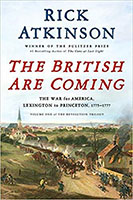
Publication: 2019
In the initial volume of the Revolution Trilogy Rick Atkinson recounts the first twenty-one months of America’s violent war for independence. From the battles at Lexington and Concord in spring 1775 to those at Trenton and Princeton in winter 1777, American militiamen and then the ragged Continental Army take on the world’s most formidable fighting force.
Native American Power in the United States
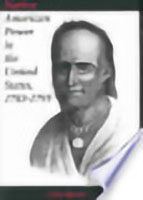
Publication: 2003
This book is a study of the role of Native Americans in the physical and political development of the United States during the first few years of its existence.
Under Auspices of Peace
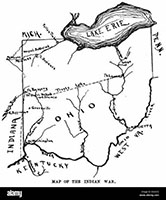
Publication: 2016
This paper examines the influence of the Northwest Indian War on the development of the early United States republic. In the years between the end of the Revolutionary War in 1783 and the establishment of a new federal government in 1789, the United States frontier was plagued by rivalry between citizens and Native Americans.
A Company of Heroes

Publication: 1962
The year is 1775, and land-hungry settlers are trying to infiltrate the ""back country"", an unexplored region beyond the mountains extending west and south from New York into Ohio, Kentucky and Virginia.
American Indian Wars

Publication: 2019
The American Indian Wars, a series of conflicts between white settlers and Native Americans which took place in the seventeenth, eighteenth and nineteenth centuries, were complex, brutal and many. An official United States Census report published in 1898 noted at least 40 wars which had taken place in the previous 100 years.
Encyclopedia of American Indian Wars, 1492-1890

Publication: 1997
While people automatically think of the Revolutionary War or the Civil War as defining moments in American history, the wars with the Indians were strikingly important in shaping the destiny and mythology of the nation.
Stoddert's War

Publication: 1987
First published in 1987, the book avoids the parochialism of earlier studies by placing the American war within a European context. It takes a critical look at the command and operations of the first secretary of the Navy, Benjamin Stoddert, and how under his direction the Navy proved itself ship for ship as--if not more--effective against French privateers than the Royal Navy.
The Quasi War
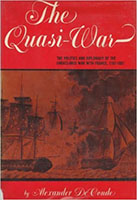
Publication: 1966
The Politics and Diplomacy of the Undeclared War with France
The Forgotten Wars
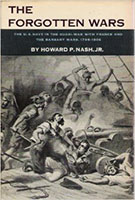
Publication: 1968
The U.S. Navy in the Quasi-War with France and the Barbary Wars
Six Frigates

Publication: 2006
Before the ink was dry on the U.S. Constitution, the establishment of a permanent military had become the most divisive issue facing the new government. Would a standing army be the thin end of dictatorship? Would a navy protect American commerce against the Mediterranean pirates, or drain the treasury and provoke hostilities with the great powers? The foundersparticularly Jefferson, Madison, and Adamsdebated these questions fiercely and switched sides more than once. How much of a navy would suffice? Britain alone had hundreds of powerful warships.
Our Naval War with France

Publication: 1909
Gardner Allen's account of the Quasi-War.
Dawn Like Thunder
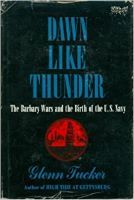
Publication: 1963
In the early 1800s, American ships off the coast of North Africa routinely found themselves the targets of Muslim pirates. These sea raiders, or ‘corsairs’ as they were known, sought captives to enslave in the Ottoman Empire’s galleys, mines and harems. When reports circulated of white Christians being shackled to oars, smashing rocks in mines and being sold into sexual slavery, the American public became incensed. The leaders of the young republic were forced to act and with remarkable dexterity built a fleet of ships that grew into a fighting force powerful enough to withstand its first major test: The Barbary Wars.
The Barbary Wars

Publication: 2005
American independence was secured from Britain on September 3, 1783. Within a year, the American merchant ship "Betsey" was captured by Sallee Rovers, state-sponsored pirates operating out of the ports of Morocco. Algerian pirates quickly seized two more American ships: the boats were confiscated, their crews held captive, and ransom demanded of the fledging American government.
America's Crusade

Publication: 2020
In the first years of the United States, the pirates of the North African coast were in the business of robbery, kidnapping and extortion. Even the kings of Europe paid them tribute. This is the true story of how Americans stopped them.
To the Walls of Derne
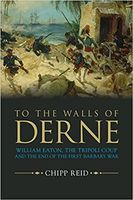
Publication: 2017
Chipp Reid, author of Intrepid Sailors, continues to tell the story of the war against the Barbary Pirates of Tripoli, America's first overseas war. To the Walls of Derne recounts the 1804 naval campaign to unseat the ruler of Tripoli, Yusuf Karamanli. Using a three-pronged approach, President Thomas Jefferson first ordered the most powerful U.S. naval squadron the world had yet seen to the Mediterranean to begin the attack on Karamanli.
The End of Barbary Terror

Publication: 2006
When Barbary pirates captured an obscure Yankee sailing brig off the coast of North Africa in 1812, enslaving eleven American sailors, President James Madison sent the largest American naval force ever gathered to that time, led by the heroic Commodore Stephen Decatur, to end Barbary terror once and for all.
Tecumseh's War
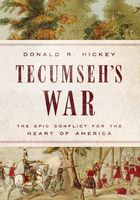
Publication: 2022
At the dawn of the nineteenth century, Native American dominance of the Northwest Territory was threatened by a series of treaties designed to open the land to US settlement. In response, a coalition of tribes launched what would come to be known as Tecumseh's War, named after the charismatic Shawnee war chief who was the guiding force behind the Native confederacy.
Little Turtle's and Tecumseh's War

Publication: 2020
When the American Revolution ended, the United States and Britain reached an impressively comprehensive peace in the Treaty of Paris. Among the important terms of the treaty, Britain recognized the colonies as free and relinquished territorial claims to them. The two sides then negotiated the boundaries that separated the United States from the British colonies in present-day Canada.
The Battle of Tippecanoe
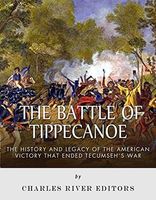
Publication: 2015
Explains the roles played by Tecumseh and William Henry Harrison before, during, and after the battle.
Exploring Little Turtle's War & Tecumseh's War
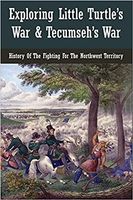
Publication: 2021
When the American Revolution ended, the United States and Britain reached an impressively comprehensive peace in the Treaty of Paris. Among the important terms of the treaty, Britain recognized the colonies as free and relinquished territorial claims to them. The two sides then negotiated the boundaries that separated the United States from the British colonies in present-day Canada. Additionally, the British and Americans strove to share certain waters, including the Mississippi River and the fishing waters off Newfoundland. Finally, the two sides made mutual promises regarding paying debts and returning property that had been confiscated during the war, including slaves...
Encyclopedia of American Indian Wars, 1492-1890

Publication: 1997
While people automatically think of the Revolutionary War or the Civil War as defining moments in American history, the wars with the Indians were strikingly important in shaping the destiny and mythology of the nation.
The War of 1812

Publication: x
x
The Weight of Vengeance

Publication: x
x
The Civil War of 1812

Publication: x
x
1812: War with American

Publication: x
x
1812: The War that Forged a Nation

Publication: x
x
The Other War of 1812: Invasion of Spanish Florida

Publication: x
x
Four Wars of 1812

Publication: x
x
The Creek War of 1813-1814

Publication: x
x
U.S. Army Campaigns of the War of 1812: The Creek War

Publication: x
x
The Creek War 1813-1814

Publication: x
x
A Paradise of Blood: The Creek War of 1812-1814

Publication: x
x
Four Wars of 1812

Publication: x
x
Florida's Seminole Wars 1817-1858

Publication: x
x
The Florida War

Publication: x
x
Border Law: The First Seminole War and American Nationhood

Publication: x
x
The March of Andrew Jackson in the First Seminole War

Publication: x
x
The Akira War: The First Plains Indian War, 1823

Publication: x
x
The Winnebago War of 1827

Publication: x
x
Inian Honour: An Incident of the Winnebago War

Publication: x
x
Troubled With Them No More

Publication: x
x
The Black Hawk War of 1832

Publication: x
x
Black Hawk War Guide

Publication: x
x
Black Hawk's War

Publication: x
x
Black Hawk and the War of 1832

Publication: x
x
History of the Black Hawk War and Autobiography

Publication: x
x
Florida's Seminole Wars 1817-1858

Publication: x
x
Florida's Negro War: Black Seminoles and the Secon Seminole War

Publication: x
x
Swamp Sailors in the Second Seminole War

Publication: x
x
The Florida War

Publication: x
x
Journey into the Wilderness

Publication: x
x
The Second Seminole War and Limits of American Aggression

Publication: x
x
History of the Second Seminole War, 1835-1842

Publication: x
x
The Alamo and the War of Texan Independence

Publication: x
x
The Texas War of Independence of 1835-36

Publication: x
x
The Texas Revolution and the U.S. - Mexican War

Publication: x
x
Sam Houston and the War of Independence in Texas

Publication: x
x
Texan Illiad: A Militar History of the Texas Revolution

Publication: x
x
Sleuthing the Alamo: Davy Crockett's Last Stand

Publication: x
x
The Texiad: An Epic of the Texas Revolution

Publication: x
x
The Aroostook War of 1839

Publication: x
x
Aroostook War: Historical Sketch

Publication: x
x
x

Publication: x
x
x

Publication: x
x
x

Publication: x
x
x

Publication: x
x
Remembered Drums: A History of the Puget Sound War

Publication: 1989
A valuable addition to the literature of the treaty wars. A narrative account of the conflict, it tells the story from the tie of the first treaty council at Medicine Creek on the Nisqually delta to the end of armed resistance west of the Cascades.
Tears of Internment: The Indian History of Fox Island and the Puget Sound Indian War
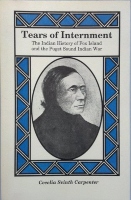
Publication: 1996
A well researched compilation of North West American Indian Conflict.
The Bitter Waters of Medicine CreekThe Bitter Waters of Medicine Creek

Publication: 2011
A Tragic Clash Between White and Native America in the Puget Sound War.
The Rogue River Indian War and Its Aftermath, 1850-1980
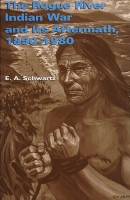
Publication: 1997
From 1855 to 1856 in western Oregon, the Native peoples along the Rogue River outmaneuvered and repeatedly drove off white opponents. In The Rogue River Indian War and Its Aftermath, 1850–1980, historian E. A. Schwartz explores the tribal groups’ resilience not only during this war but also in every period of federal Indian policy that followed.
Indian Wars of the Rogue River
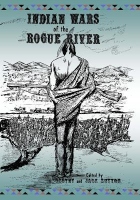
Publication: 2013
This is an edited and expanded version of the original history of the Indian Wars first written in 1894 by Mrs. Frances Victor, who had been commissioned in 1891, to write the history by the Oregon Secretary of State and was titled "The Early Indian Wars of Oregon." This was considered to be the most accurate and detailed of all histories portraying the early conflicts between the white man and Indian. Since the turn of the century, however, researchers have uncovered many documents that alter, enhance orcontradict the original work.
Requiem for a People: The Rogue Indians and the Frontiersmen
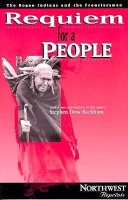
Publication: 1996
A classic history of south-western Oregon's Rogue River Indian wars. Beckham strives to relate the Indian view of this tragic history, while identifying the cultural and ecological consequences of white settlement and mining.
Florida's Seminole Wars 1817-1858

Publication: 2003
Years before the first shots of the Civil War were fired, Florida witnessed a clash of wills and ways that prompted three wars unlike any others in America's history.
The Origin, Progress, and Conclusion of the Florida War

Publication: 1848
A first hand account of conflict in Florida.
History of the Third Seminole War: 1849-1858
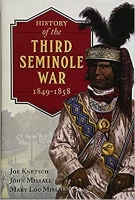
Publication: 2018
History of the Third Seminole War is a detailed narrative of the war and its causes, containing numerous firsthand accounts from participants in the conflict, derived from virtually all the available primary sources.
x

Publication: x
x
Camp Floyd and the Mormons: The Utah War

Publication: 2005
Traces the history of the sojourn of "Johnston's Army" in Utah Territory from the beginning of the Utah War in 1857 through the abandonment of Camp Floyd in Cedar Valley west of Utah Lake at the outbreak of the Civil War.
At Sword’s Point, Part 1

Publication: 2016
The Utah War of 1857–58, the unprecedented armed confrontation between Mormon Utah Territory and the U.S. government, was the most extensive American military action between the Mexican and Civil wars.
At Sword’s Point, Part 2

Publication: 2016
The continued story from At Sword's Point, Part 1.
The Long Walk: A History of the Navajo Wars, 1846-68

Publication: 1978
The Long Walk does not merely explore the Navajo roundup and the horrors of their internment at Fort Sumner. It offers instead the first truly detailed study of the Navajo Wars, their causes and aftermaths.
Navajo Wars: Military Campaigns, Slave Raids, and Reprisals

Publication: 1990
Originally published in 1972, and out of print since 1979, this book remains the best and most complete synthesis of three centuries of wars between the Navajo and three successive imperial administrations.
x

Publication: x
x
The Pig War: The Last Canada-US Border Conflict

Publication: 2011
The book is an excellent travel companion to anyone visiting the San Juans and the original American and British camps that are open to the public.
The Pig War: The Most Perfect War in History

Publication: 2009
Set against the framework of US attempts to gain control of the whole North American continent, The Pig War is a highly readable account of a little-known episode in Anglo-American history.
The Pig War: How a Porcine Tragedy Taught England and America to Share

Publication: 2010
Here is a true story of how the great nations of America and England almost went to war in 1859 over a pig--but learned to share instead.
John Brown's Raid on Harpers Ferry: A Brief History

Publication: 2008
Despised and admired during his life and after his execution, the abolitionist John Brown polarized the nation and remains one of the most controversial figures in U.S. history. His 1859 raid on Harpers Ferry, Virginia, failed to inspire a slave revolt and establish a free Appalachian state but became a crucial turning point in the fight against slavery and a catalyst for the violence that ignited the Civil War. Jonathan Earle’s volume presents Brown as neither villain nor martyr, but rather as a man whose deeply held abolitionist beliefs gradually evolved to a point where he saw violence as inevitable.
John Brown's Raid on Harpers Ferry

Publication: 2005
Explains the story of John Brown's 1859 raid on Harpers Ferry, Virginia. Written in graphic-novel format.
Cortina: Defending the Mexican Name in Texas

Publication: 2007
Thompson’s book provides not only a powerfully written history of a Mexican American who symbolizes ‘resistance to oppression and intolerance,’ but also a clear, cogent explanation of the relationship between the United States and Mexico as they face each other across the Texas border.
The Paiute War of 1860: A Concise History

Publication: 2016
The Paiute War of 1860 was a short, but violent war between Paiute and allied Indians and the newly arrived settlers and miners attracted by the Comstock Lode. At stake was the control of present day northern Nevada.
Sand in a Whirlwind: The Paiute Indian War of 1860

Publication: 1985
Sand in a Whirlwind is a dramatic account of the events surrounding hostilities between white settlers and Indians in the spring of 1860. Thirty years after its publication, Ferol Egan's now classic tale continues to enlighten and engage readers.
The Personal Memoirs of Ulysses S. Grant

Publication: 2017
The Personal Memoirs of Ulysses S. Grant is the autobiography of Ulysses S. Grant, the 18th President of the United States, focused mainly on his military career during the Mexican-American War and the American Civil War.
The Fiery Trial

Publication: 2010
A man of considered words and deliberate actions, Lincoln navigates the dynamic politics deftly, taking measured steps, often along a path forged by abolitionists and radicals in his party. Lincoln rises to leadership in the new Republican Party by calibrating his politics to the broadest possible antislavery coalition. As president of a divided nation and commander in chief at war, displaying a similar compound of pragmatism and principle, Lincoln finally embraces what he calls the Civil War's “fundamental and astounding” result: the immediate, uncompensated abolition of slavery and recognition of blacks as American citizens.
For Cause and Comrades: Why Men Fought in the Civil War

Publication: 1998
Gazing at Bloody Lane where, in 1862, several Union assaults were brutally repulsed before they finally broke through, he marveled, you couldn't get American soldiers today to make an attack like that. Why did those men risk certain death, over and over again, through countless bloody battles and four long, awful years?
Chronicles of War: Apache & Yavapai Resistance in the Southwestern United States and Northern Mexico, 1821-1937

Publication: 2014
Based on three decades of extensive field work and exhaustive research in manuscript and published sources, Berndt Kuhn chronicles more than a century of conflict between Native Americans, Anglos, and Mexicans in the southwestern United States and northern Mexico.
Yavapai Wars

Publication: 2012
The Yavapai Wars, or the Tonto Wars, were a series of armed conflicts between the Yavapai and Tonto tribes against the United States in Arizona.
Massacre in Minnesota: The Dakota War of 1862

Publication: 2019
In August 1862 the worst massacre in U.S. history unfolded on the Minnesota prairie, launching what has come to be known as the Dakota War, the most violent ethnic conflict ever to roil the nation.
The Infamous Dakota War Trials of 1862: Revenge, Military Law and the Judgment of History

Publication: 2016
The U.S.-Dakota War, the bloodiest Indian war of the 19th century, erupted in southwestern Minnesota during the summer of 1862. In the war's aftermath, a hastily convened commission of five army officers conducted trials of 391 Indians charged with murder and massacre.
Through Dakota Eyes: Narrative Accounts Of The Minnesota Indian War Of 1862

Publication: 2012
This collection of thirty-six narratives presents the Dakota Indians' experiences during a conflict previously known chiefly from the viewpoints of non-Indians.
The Lost Gold Rush Journals: Daniel Jenks 1849-1865

Publication: 2021
Recovered account of the Colorado War.
The Last War Trail: The Utes and the Settlement of Colorado

Publication: 2000
Robert Emmitt's The Last War Trail: The Utes and the Settlement of Colorado is one of the most important and innovative books written on Ute Indians from Colorado. Saponise Cuch, Chief of the White River Utes, said to Robert Emmitt in 1948, "I am an old man now, and I am the only one left who remembers this. I have known that someone would come to tell this story; now you will write it out, as I have told it to you."
The Second Colorado Cavalry: A Civil War Regiment on the Great Plains

Publication: 2020
During the Civil War, the Second Colorado Volunteer Regiment played a vital and often decisive role in the fight for the Union on the Great Plains—and in the westward expansion of the American empire.
x

Publication: x
x
x

Publication: x
x
x

Publication: x
x
x

Publication: x
x
x

Publication: x
x
x

Publication: x
x
x

Publication: x
x
x

Publication: x
x
x

Publication: x
x
x

Publication: x
x
x

Publication: x
x
x

Publication: x
x
x

Publication: x
x
x

Publication: x
x
x

Publication: x
x
x

Publication: x
x
x

Publication: x
x
x

Publication: x
x
x

Publication: x
x
x

Publication: x
x
x

Publication: x
x
x

Publication: x
x
x

Publication: x
x
x

Publication: x
x
x

Publication: x
x
x

Publication: x
x
x

Publication: x
x
x

Publication: x
x
x

Publication: x
x
x

Publication: x
x
x

Publication: x
x
x

Publication: x
x
x

Publication: x
x
x

Publication: x
x
x

Publication: x
x
x

Publication: x
x
x

Publication: x
x
x

Publication: x
x
x

Publication: x
x
x

Publication: x
x
x

Publication: x
x
x

Publication: x
x
x

Publication: x
x
x

Publication: x
x
x

Publication: x
x
x

Publication: x
x
x

Publication: x
x
x

Publication: x
x
x

Publication: x
x
x

Publication: x
x
x

Publication: x
x
x

Publication: x
x
x

Publication: x
x
x

Publication: x
x
x

Publication: x
x
x

Publication: x
x
x

Publication: x
x
x

Publication: x
x
x

Publication: x
x
x

Publication: x
x
x

Publication: x
x
x

Publication: x
x
x

Publication: x
x
x

Publication: x
x
x

Publication: x
x
x

Publication: x
x
x

Publication: x
x